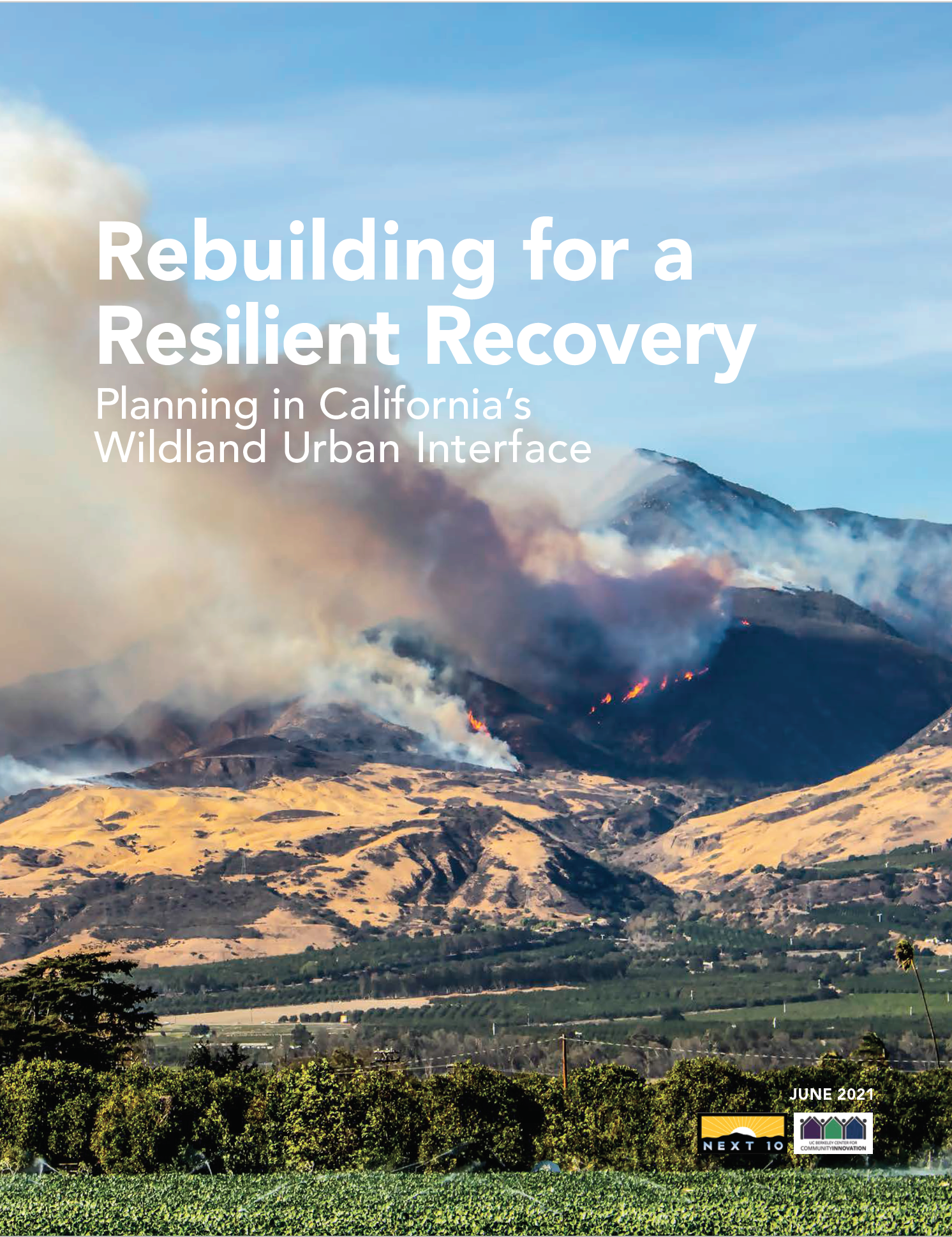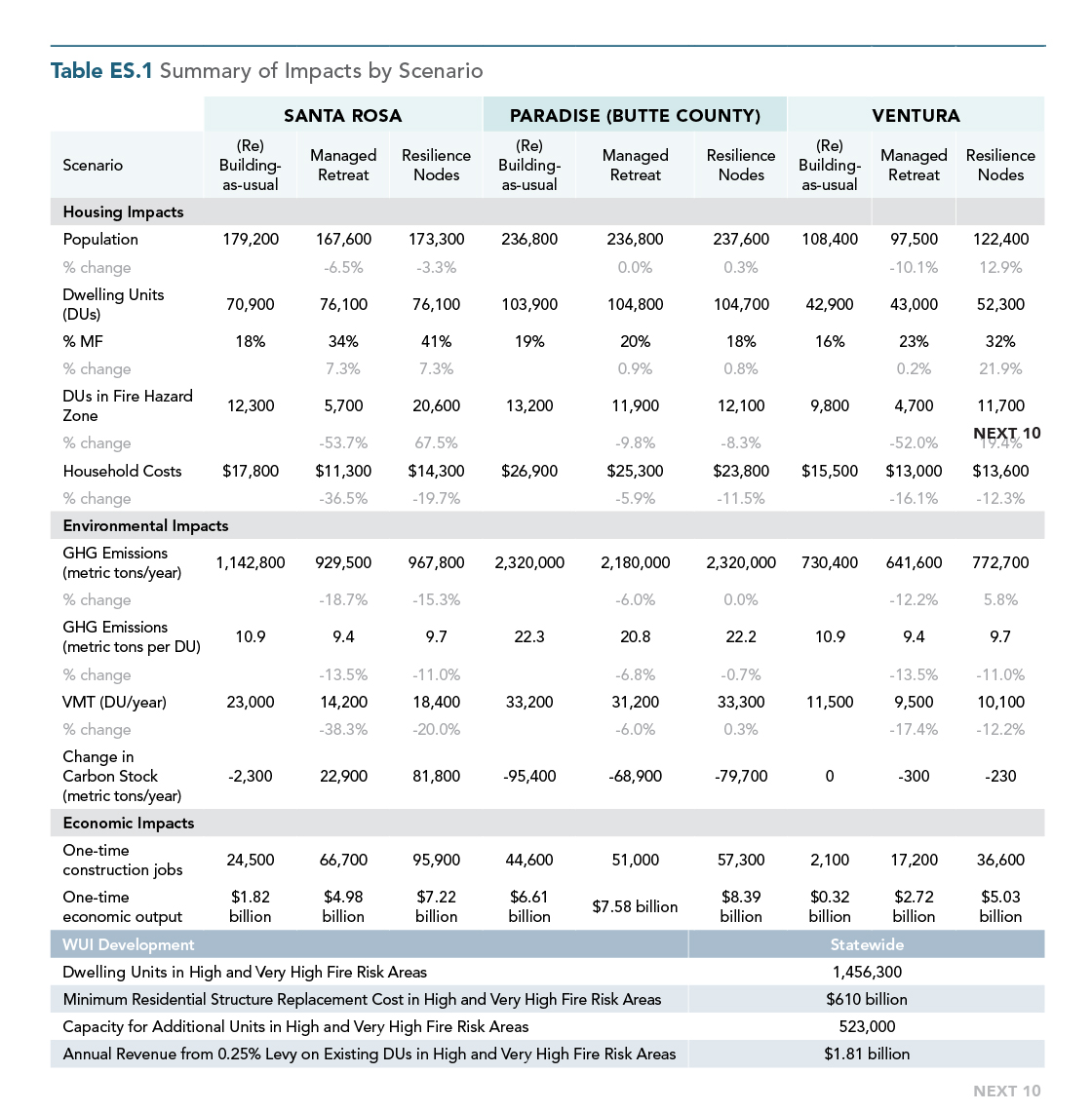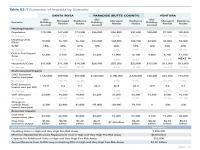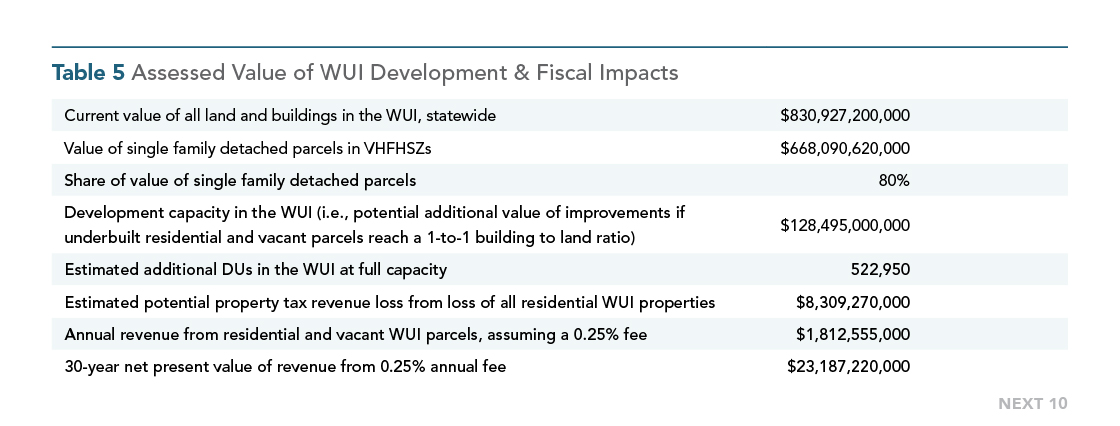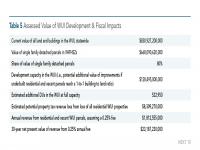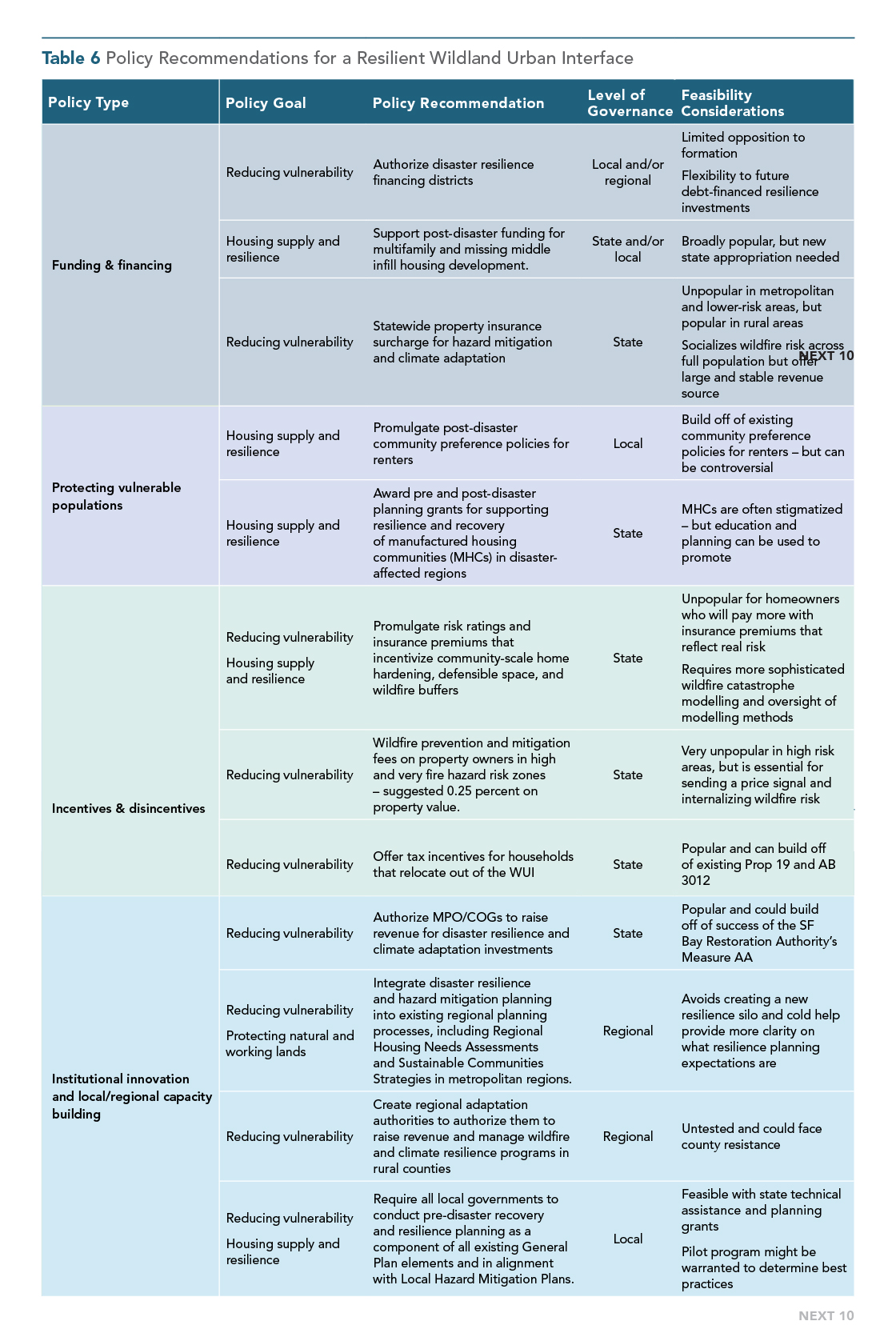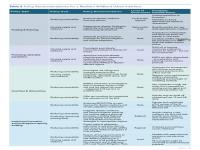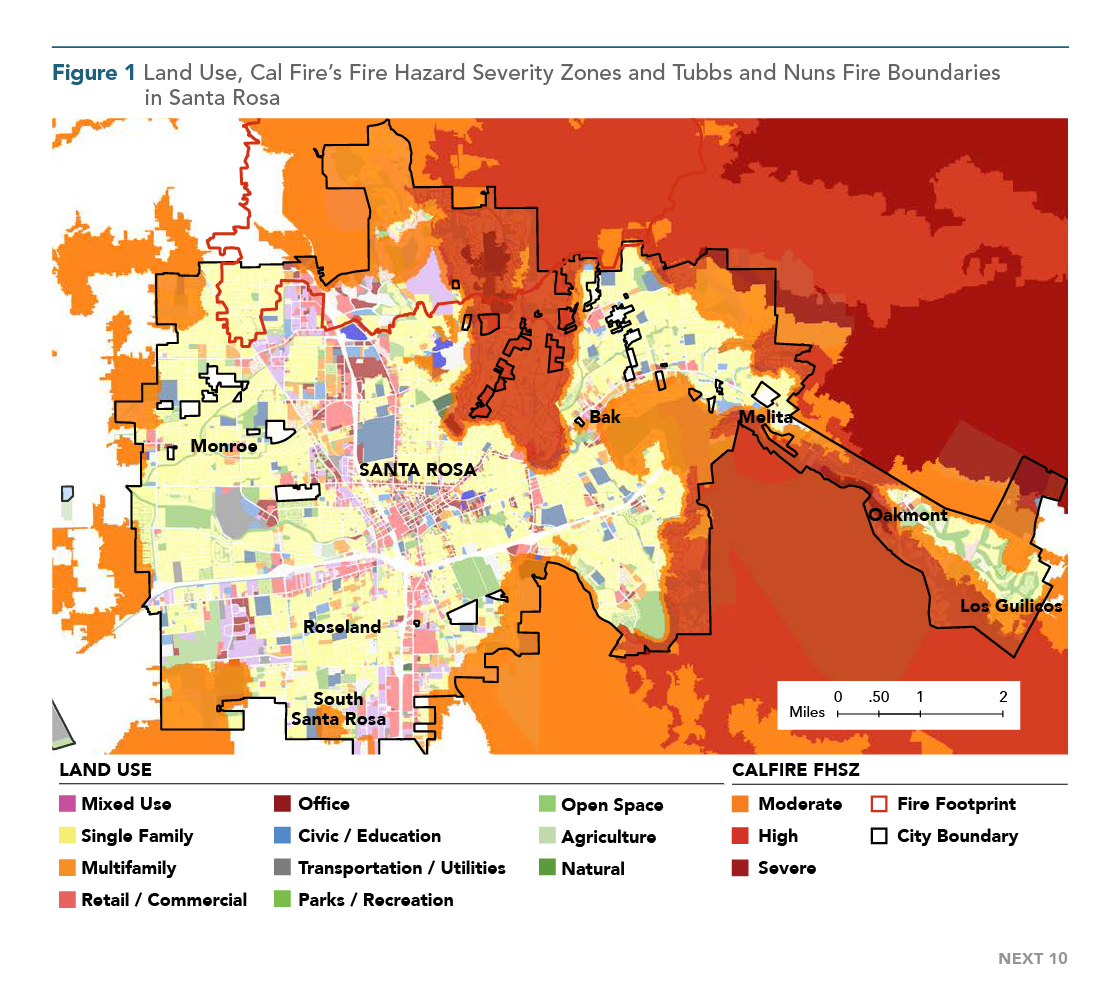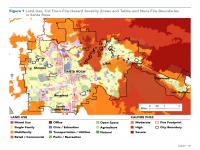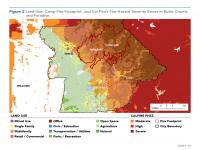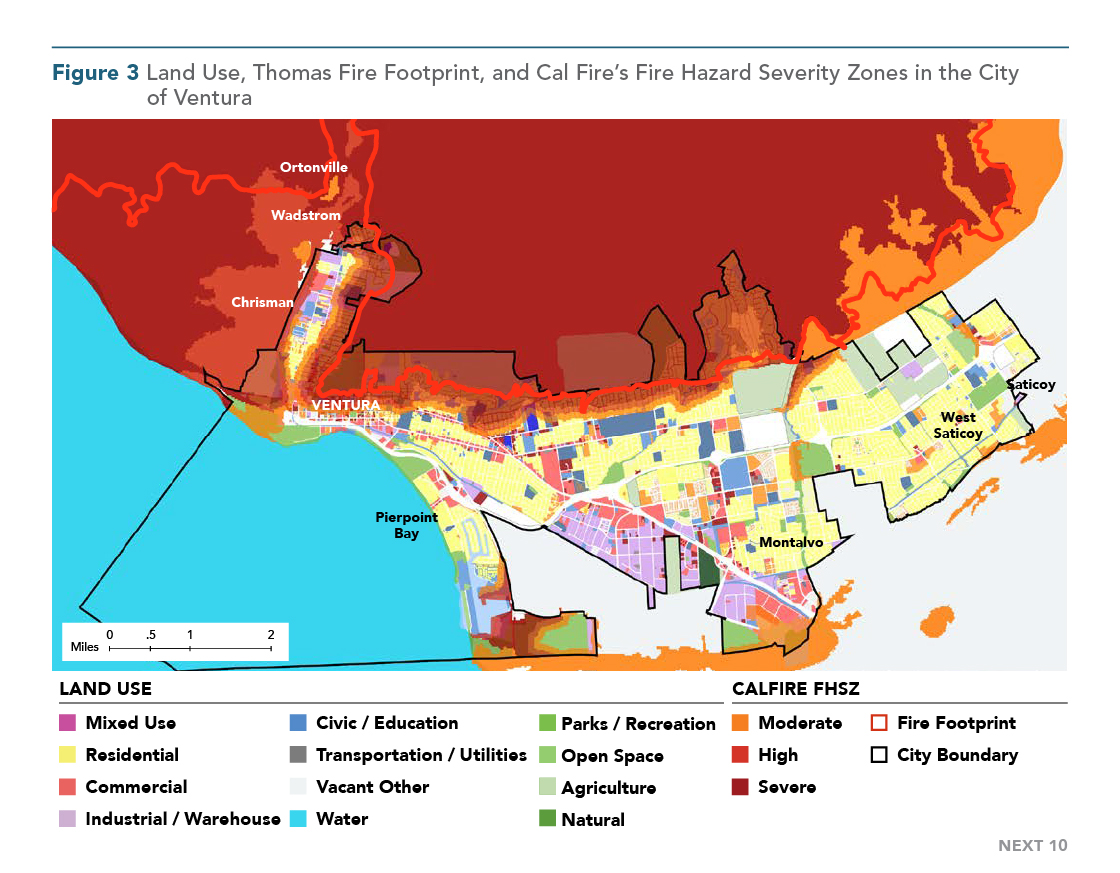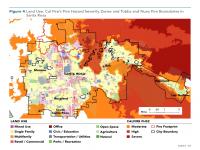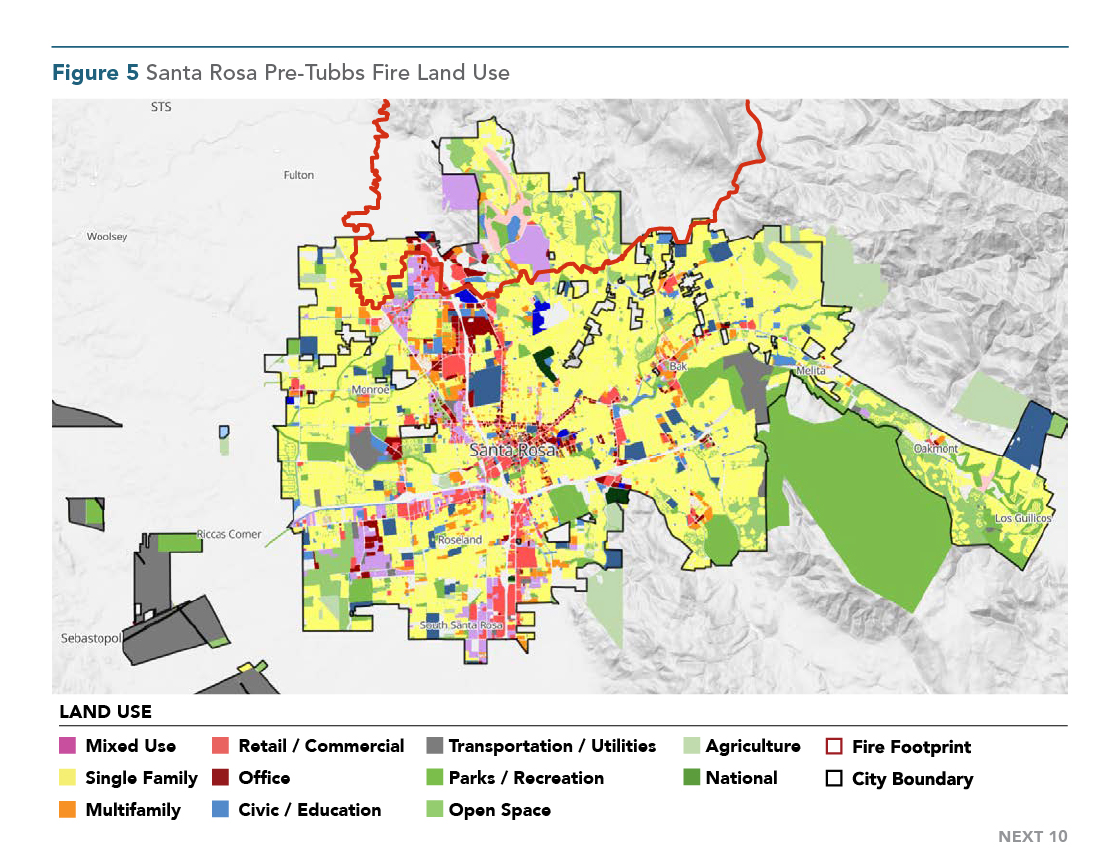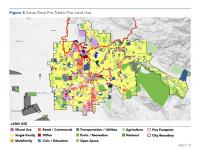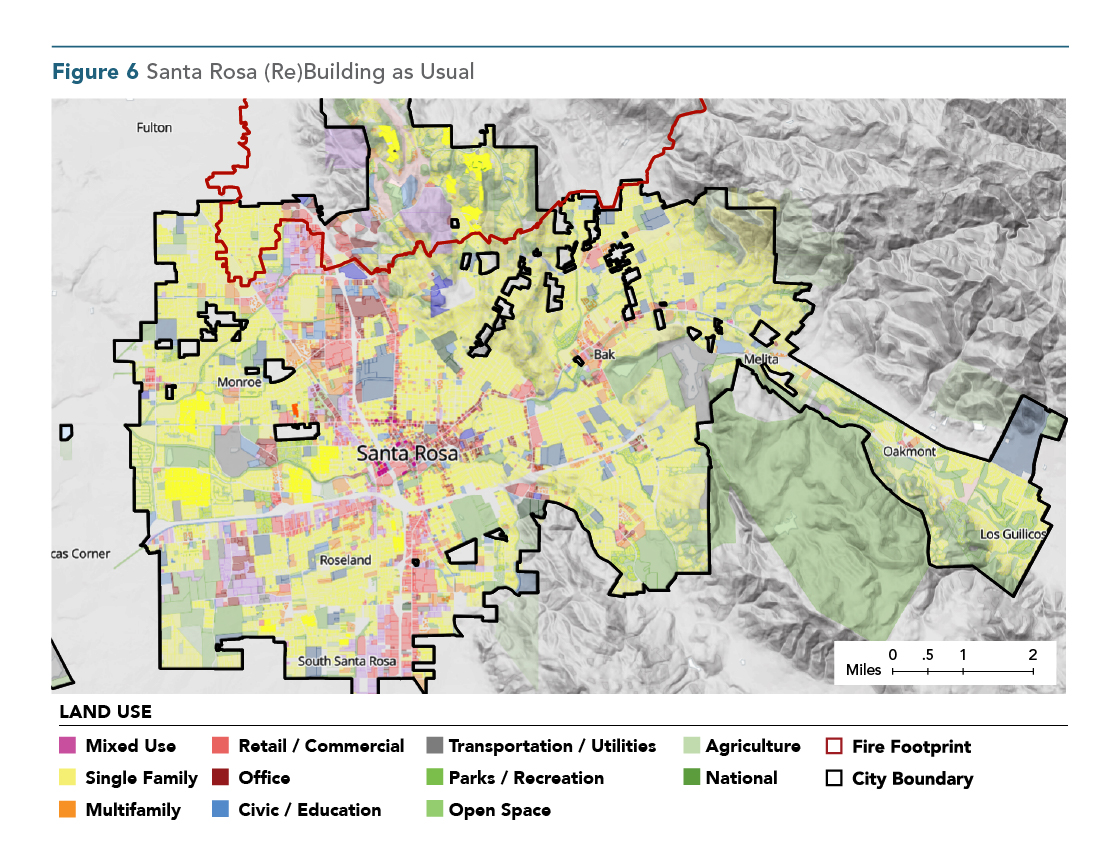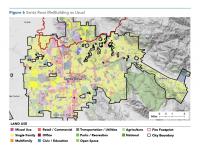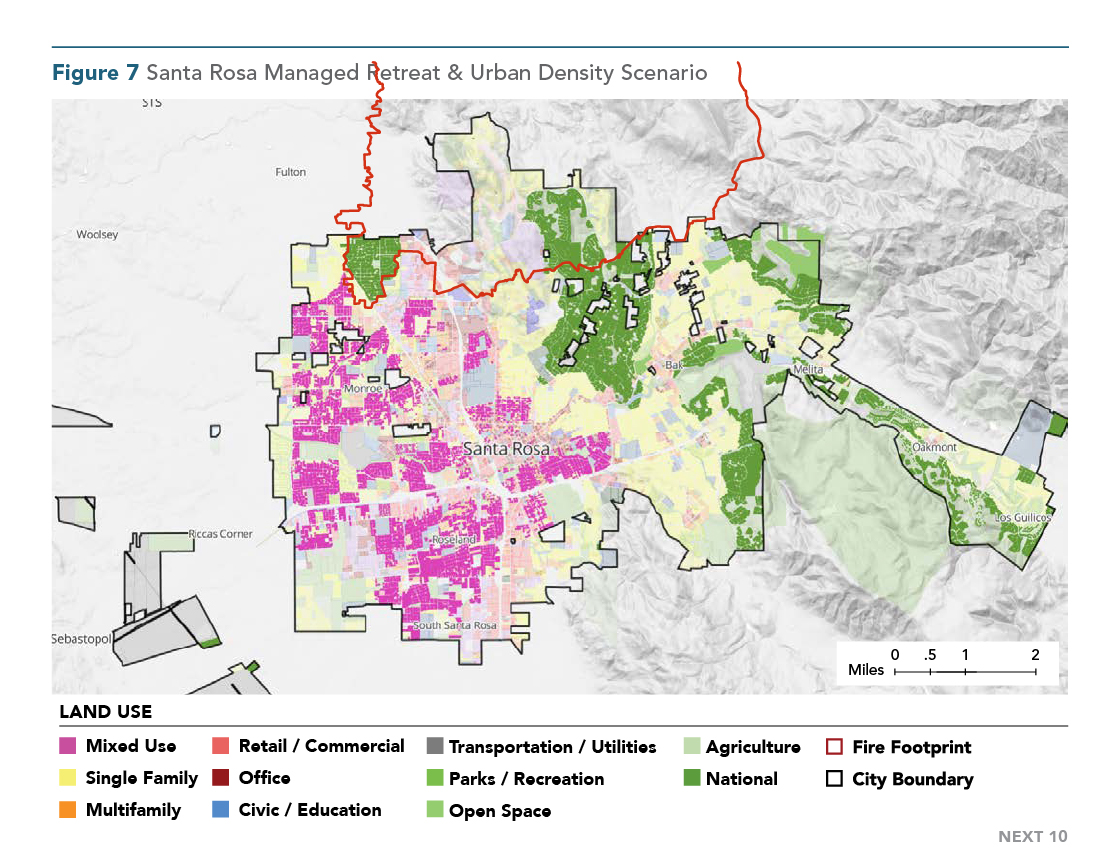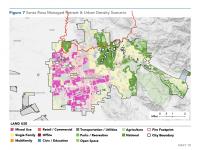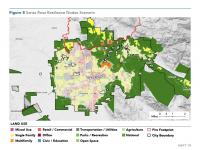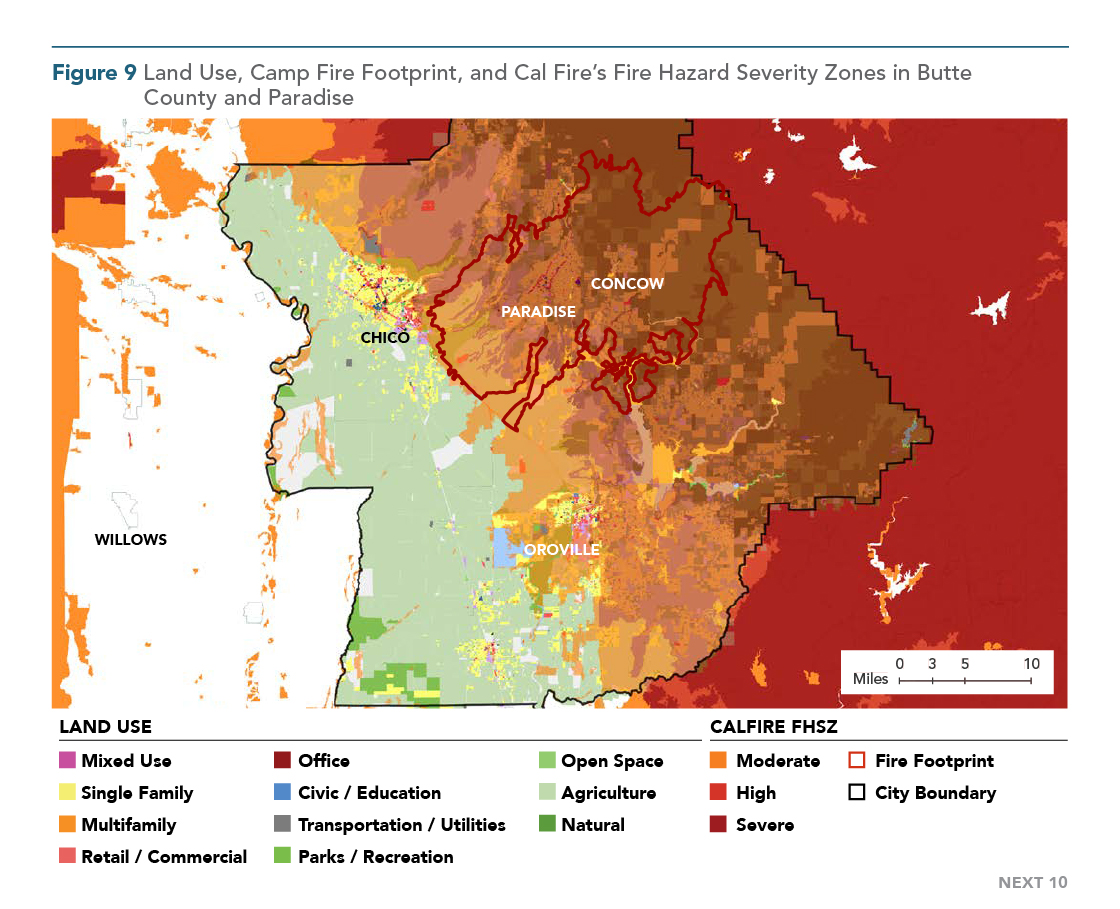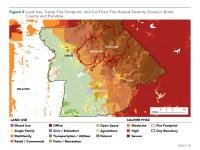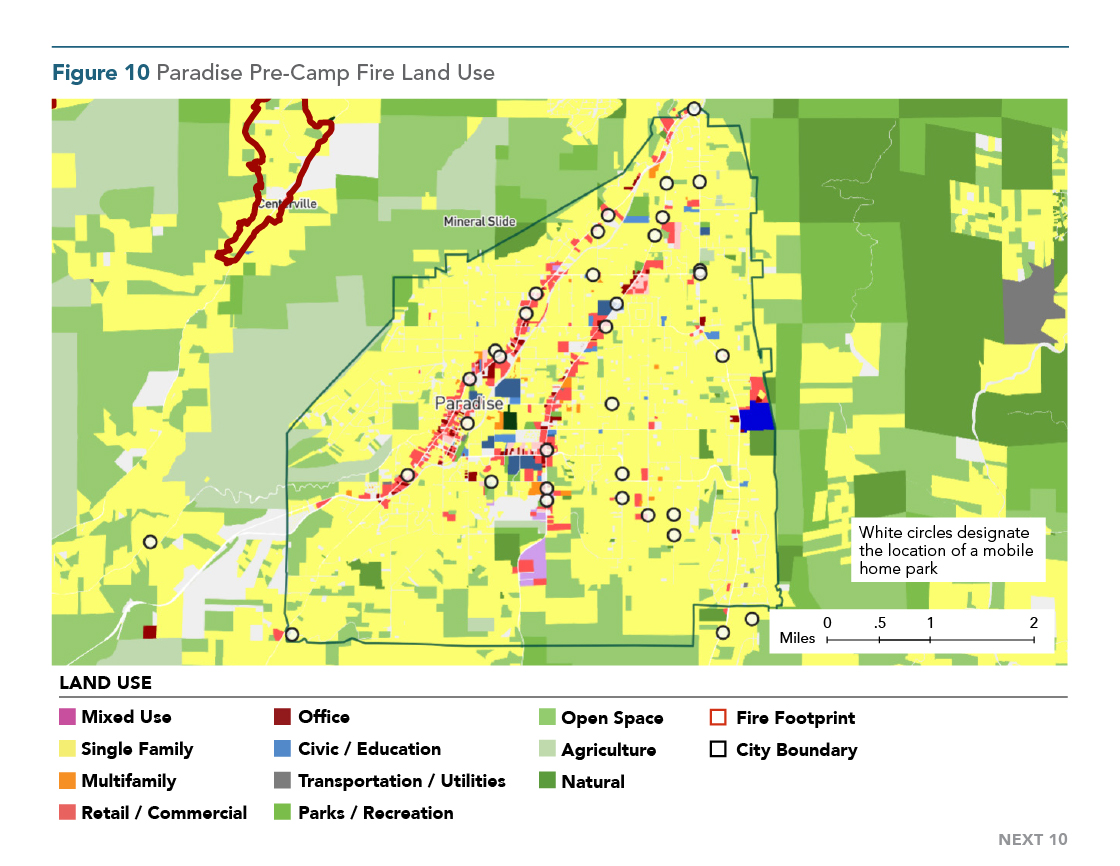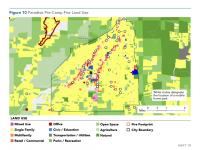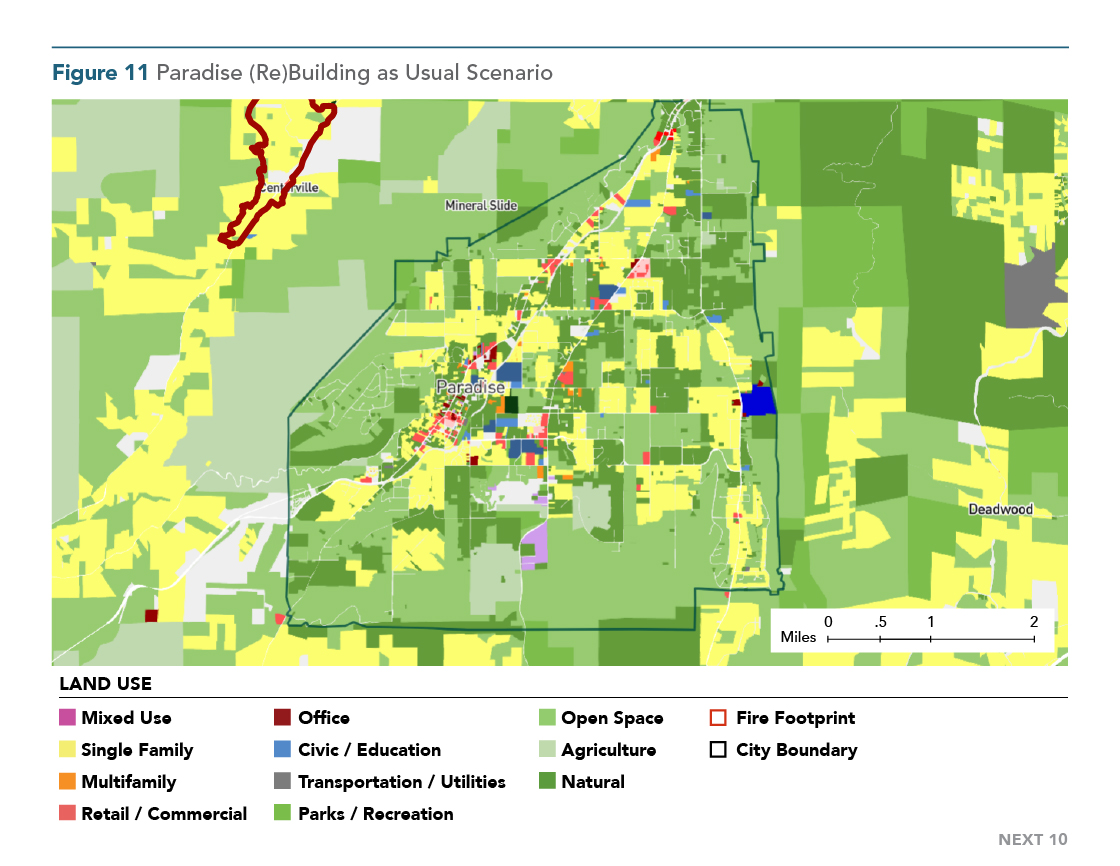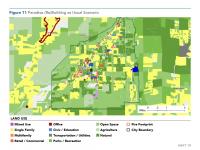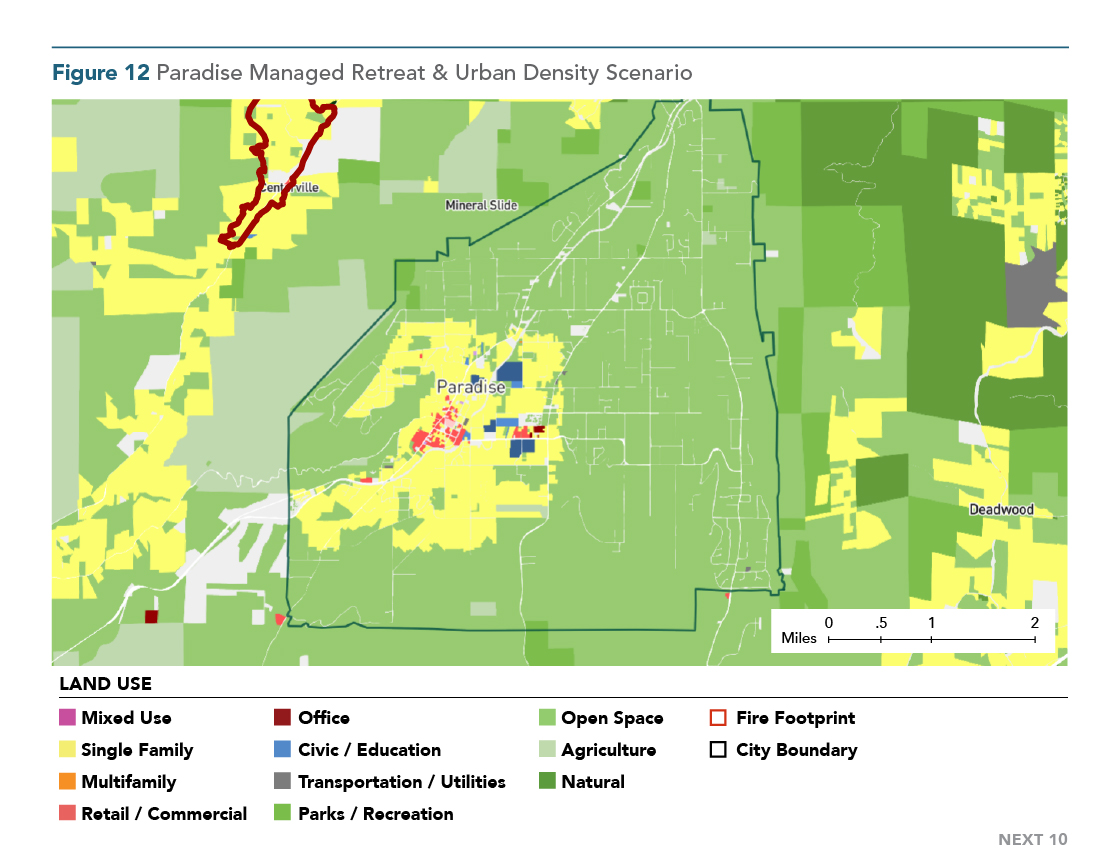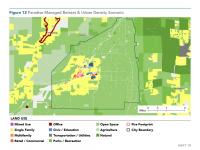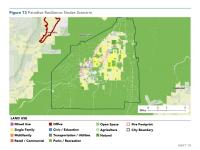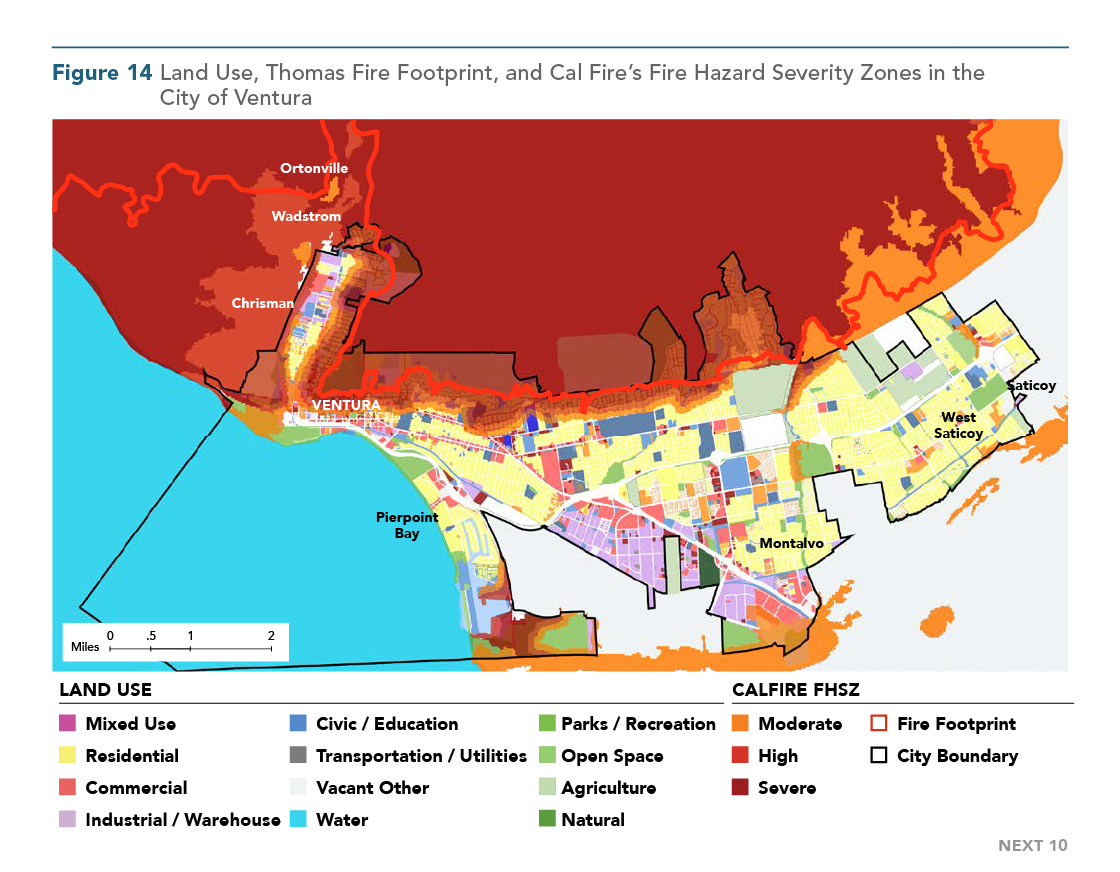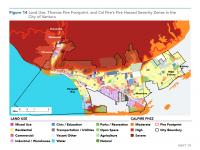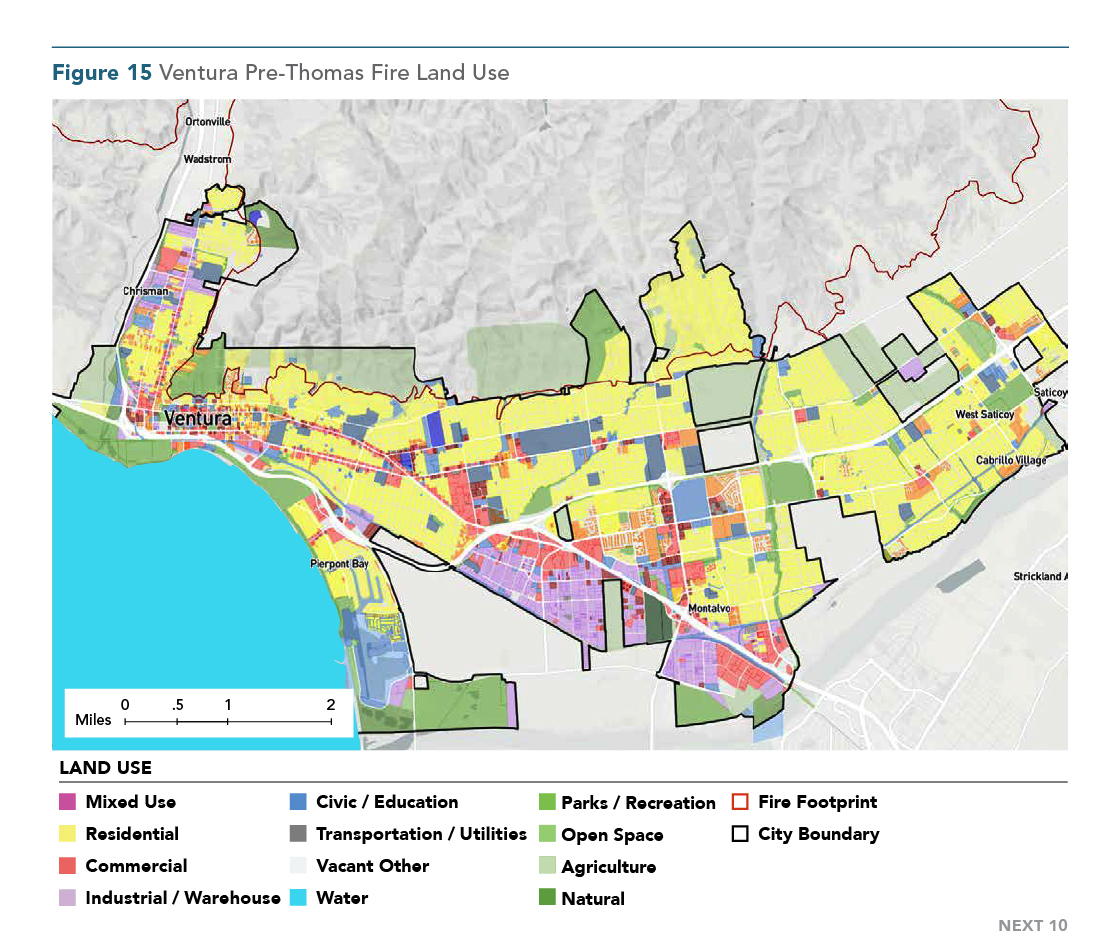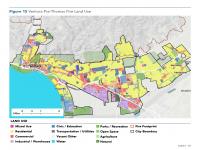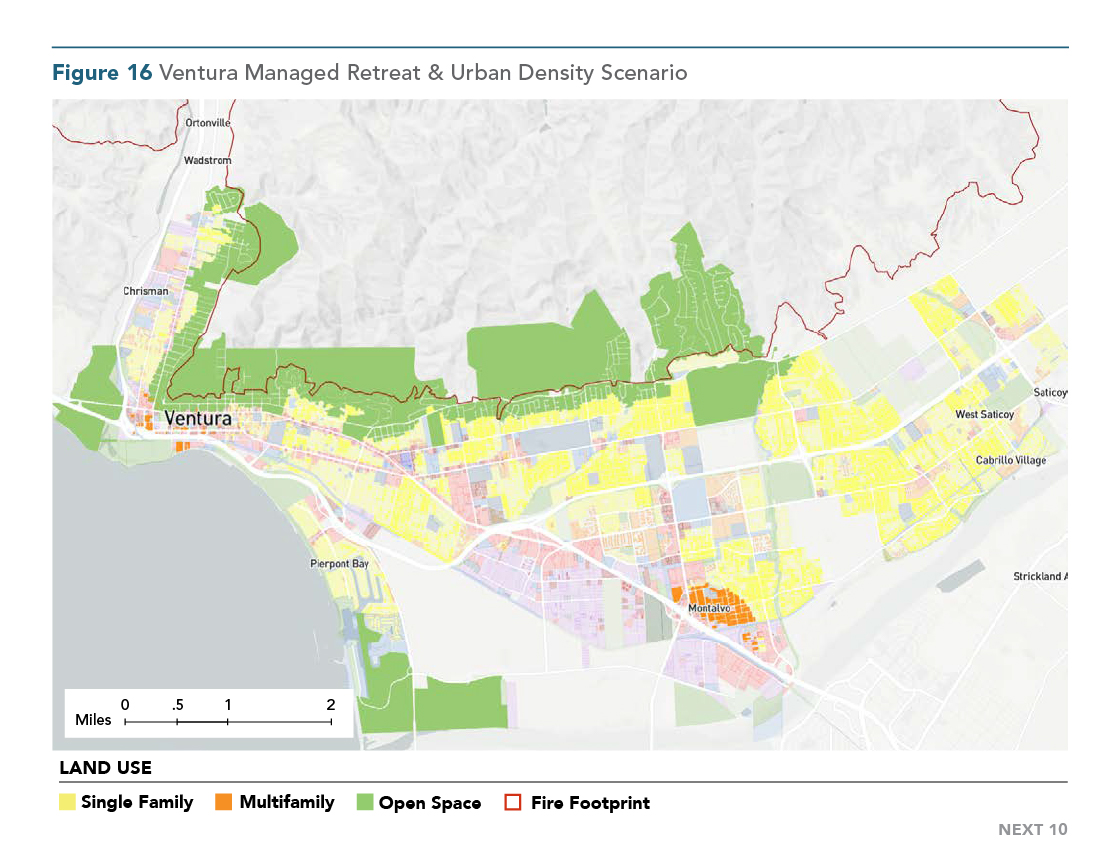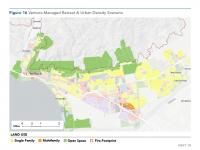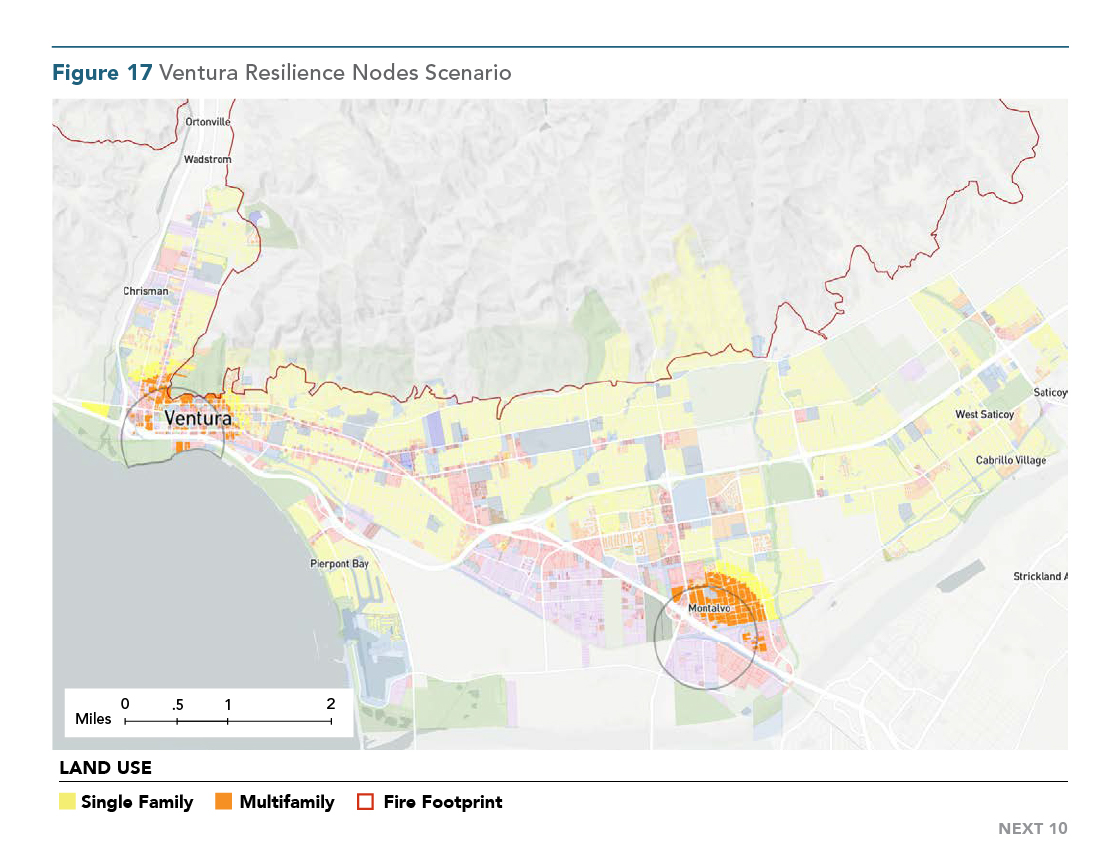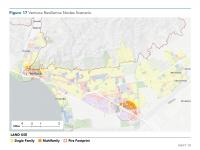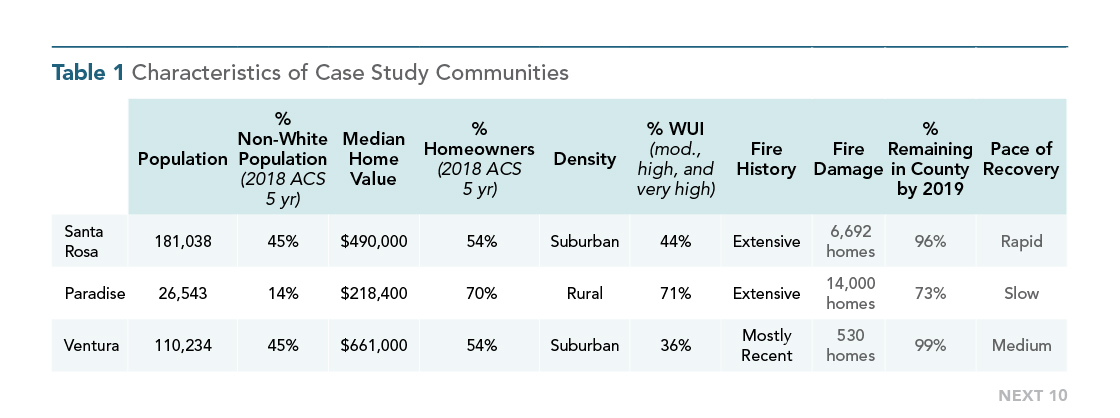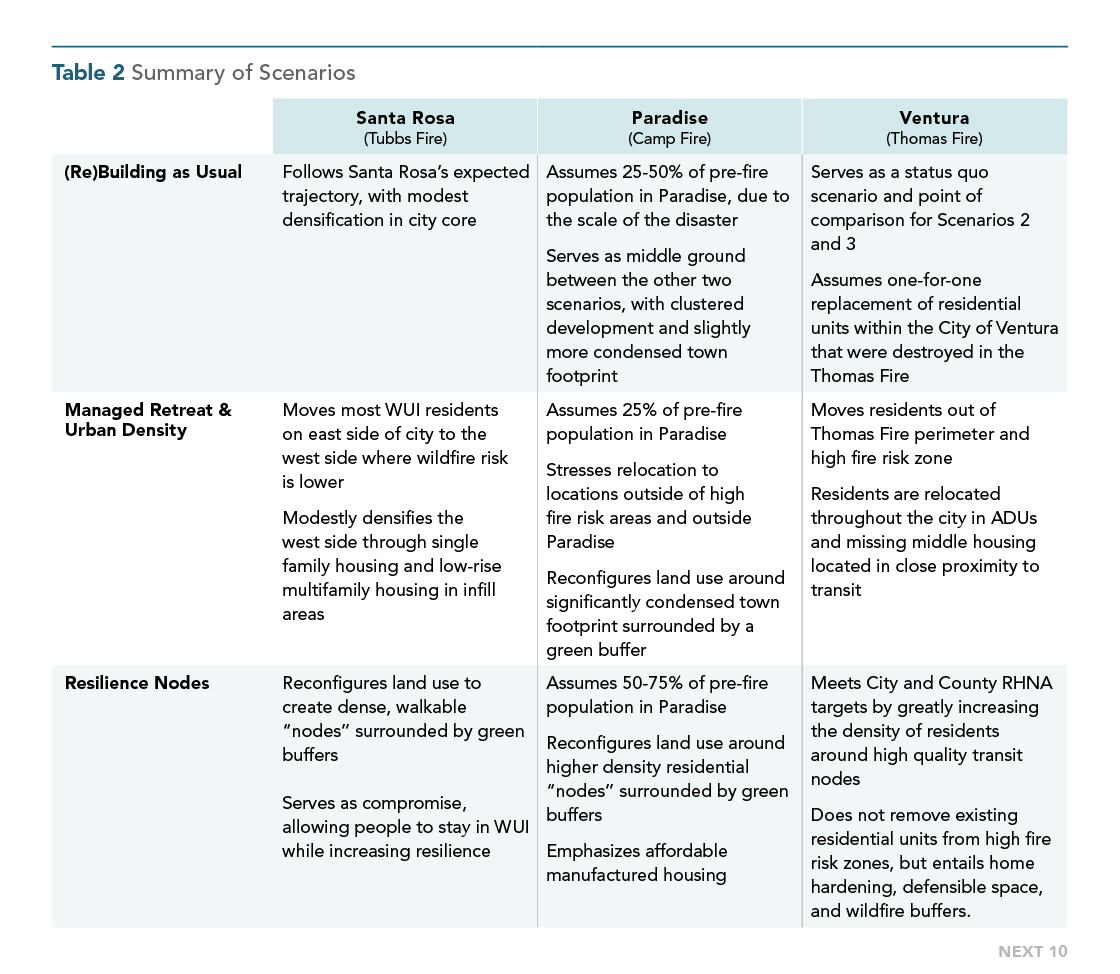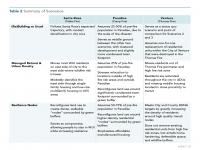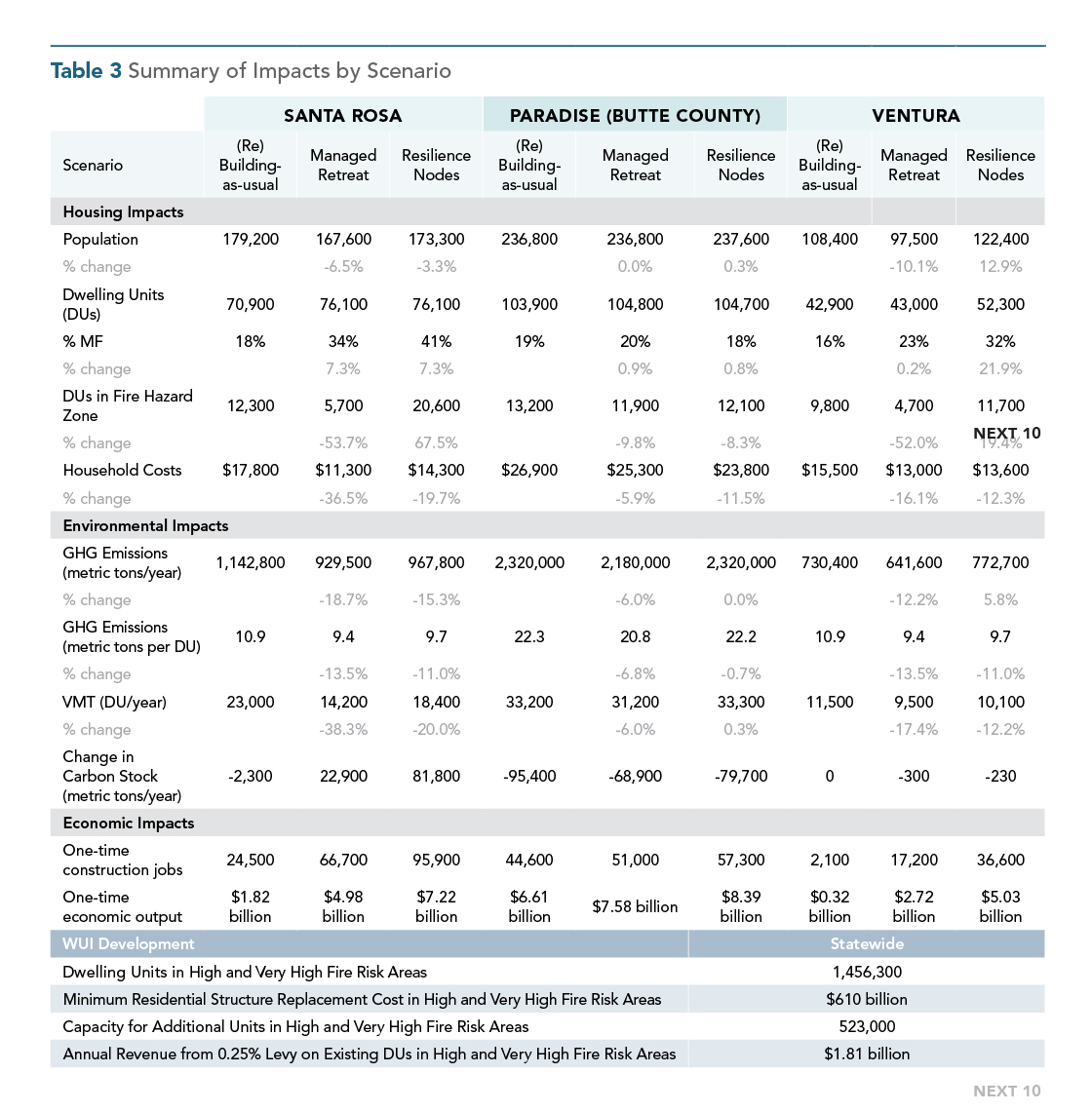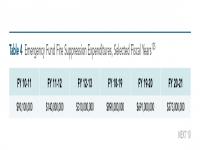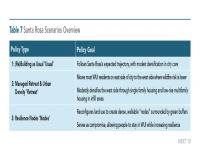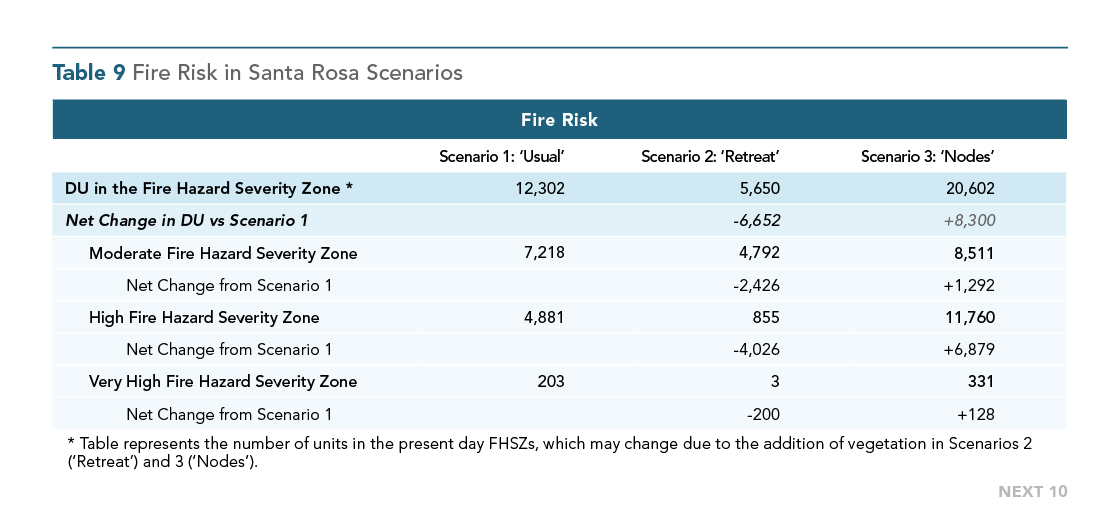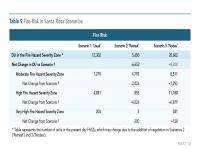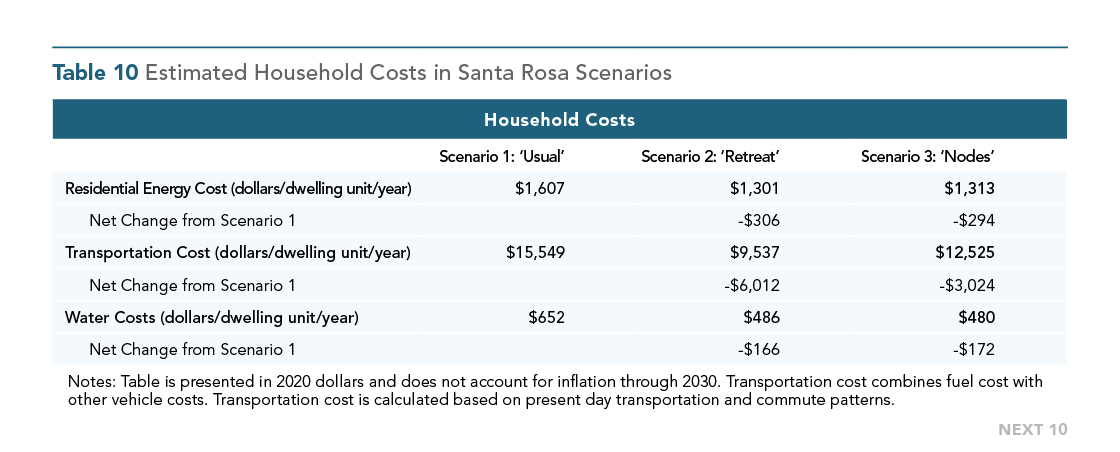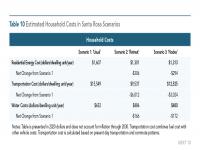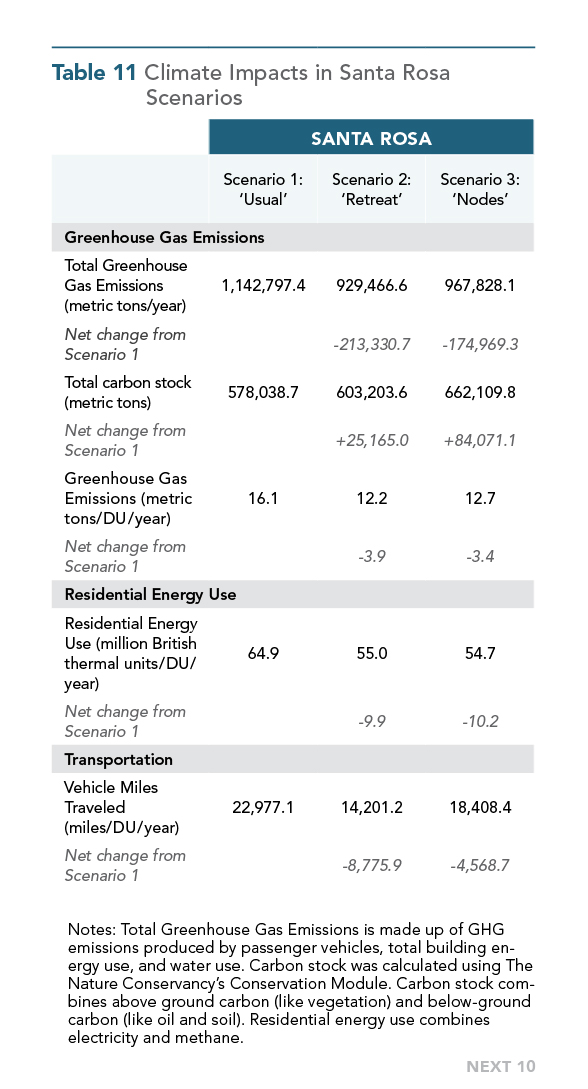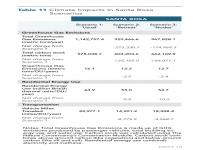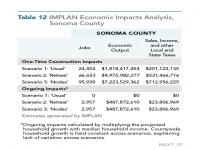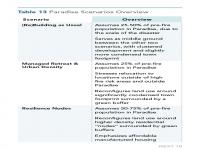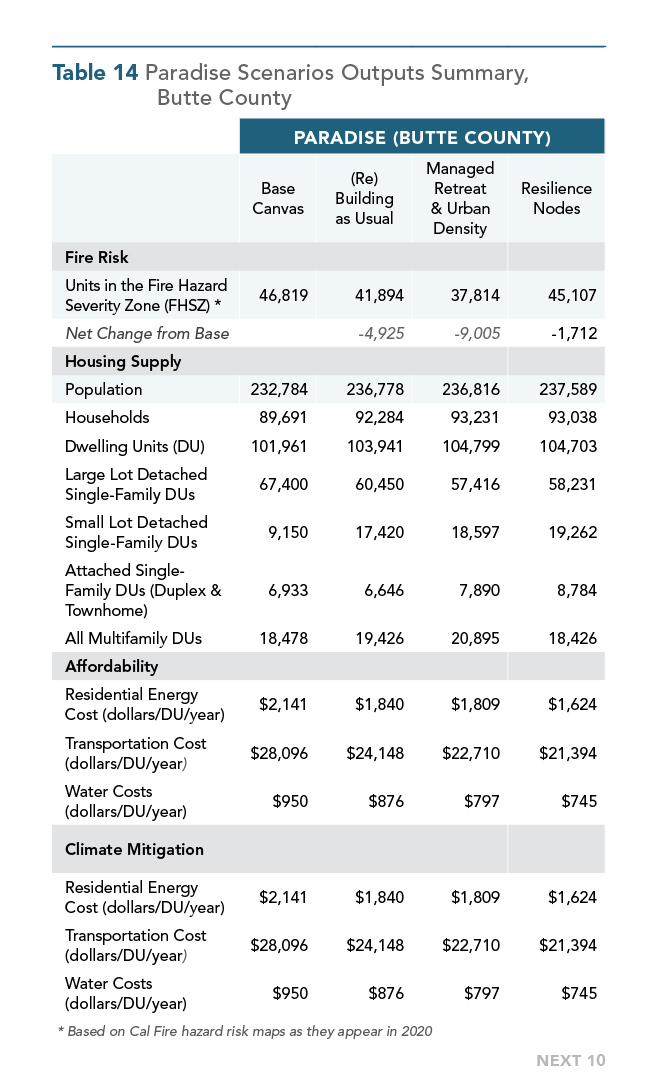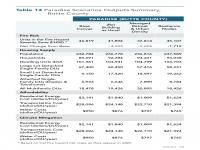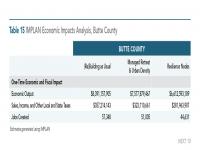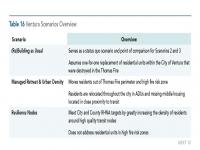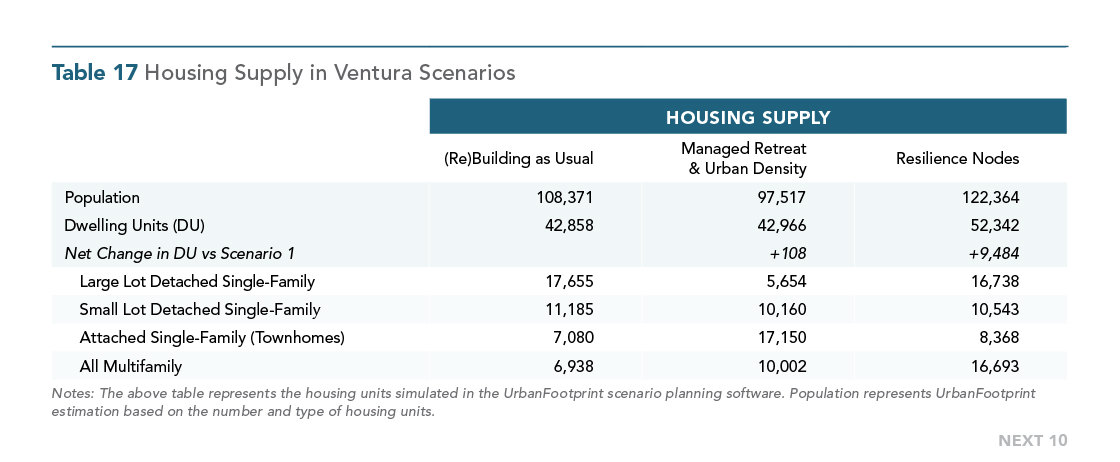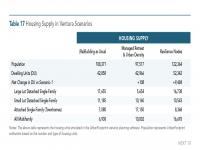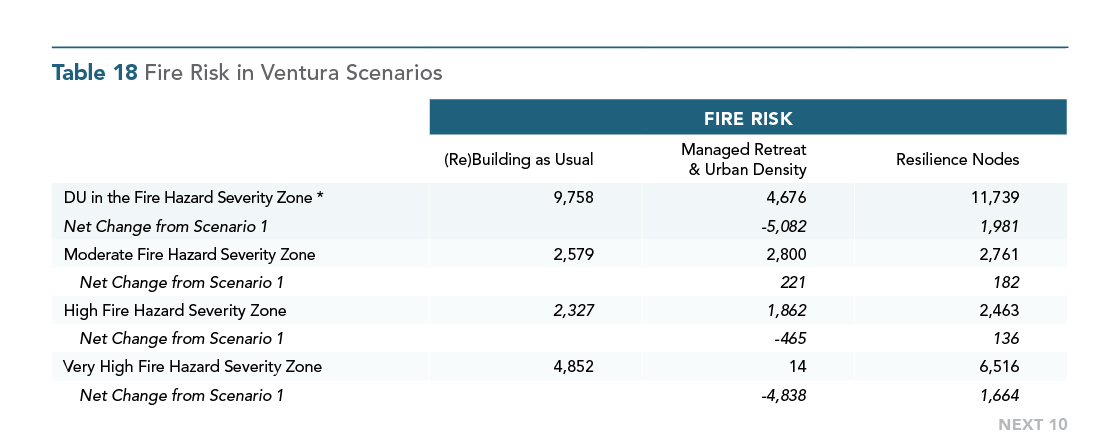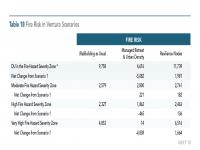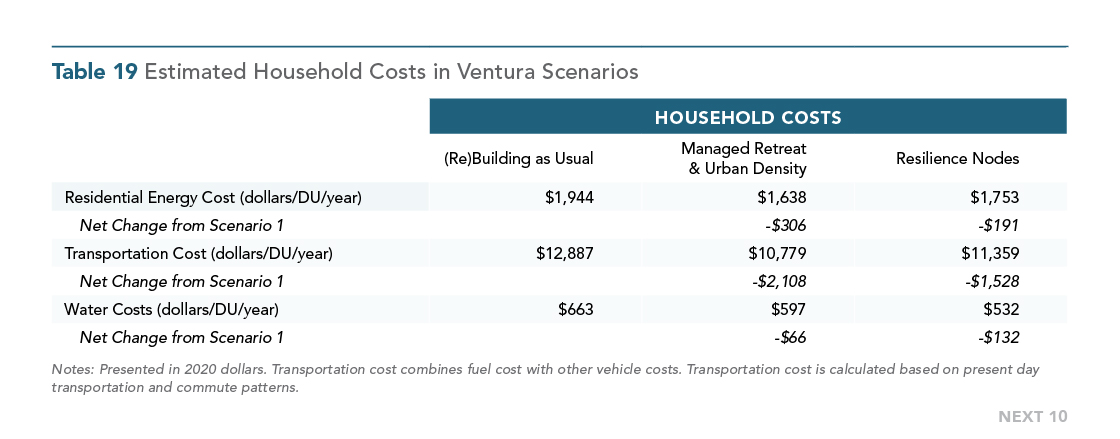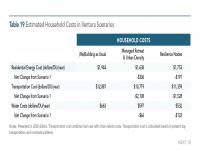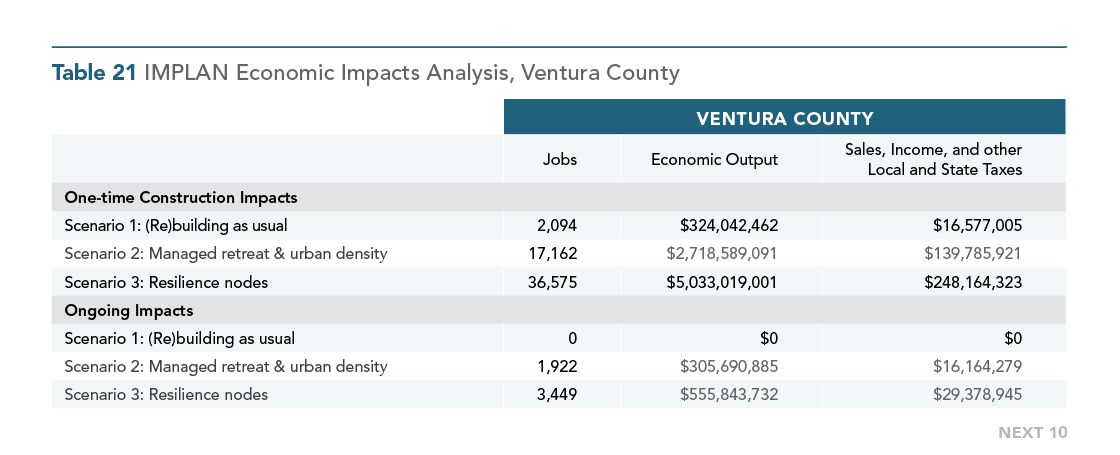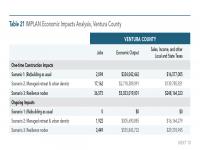Publications
Rebuilding for a Resilient Recovery: Planning in California's Wildland Urban Interface
California must comprehensively reshape how we rebuild after wildfires—or risk an unthinkable surge in costs and major setbacks to the state’s housing supply amidst a record housing crisis. That’s the finding of Rebuilding for a Resilient Recovery: Planning in California's Wildland Urban Interface, released today from researchers at the UC Berkeley Center for Community Innovation and non-partisan, non-profit think tank Next 10.
The researchers studied three communities recently affected by fires—Santa Rosa (Tubbs Fire, 2017), Ventura (Thomas Fire, 2017) and Paradise (Camp Fire, 2018)—and found that state and local land use policies, coupled with the state's housing shortage, are ratcheting up the economic and human cost of wildfire by incentivizing rebuilding in the high risk-wildland urban interface (WUI), instead of redirecting development away from fire-prone areas. This is intensifying untenable safety, economic, and climate risks as the state prepares for another harrowing wildfire season in the midst of record drought.
Under current estimates, more than one in 12 Californian homes is located in an area identified as having a high risk of burning in a wildfire event, though researchers caution that this number is likely an underestimate, as the state has not updated its fire risk maps since 2007. In addition, over a half million new homes could well be built on underutilized residential land in the WUI in coming decades. Additionally, the insurance impacts of continued development in high-risk areas of the WUI place significant burdens on local economies. From 1964 to 1990, the insurance industry paid out an average of $100 million per year in fire insurance claims in California. From 2011 to 2018, that figure increased to $4 billion per year and—following the 2017 and 2018 fire seasons—insurers paid out approximately $26 billion to homeowners.
Researchers analyzed three rebuilding scenarios in line with each community's physical and socioeconomic characteristics and identified the economic, climate, workforce, future fire risk, and resident displacement impacts each of those scenarios were likely to have. The scenarios included:
- Rebuilding as usual, in which existing recovery plan and historical growth trends guide the anticipated development patterns;
- Managed retreat and urban density, in which disaster survivors are incentivized to move to lower-risk locations, while land use planning and incentives promote infill development in existing urban nodes; and
- Resilience Nodes, in which communities rebuild some housing in high-risk areas but incorporate robust wildfire mitigation features, including development clusters surrounded by defensible space.
The report finds that pursuing either the “Managed Retreat” or “Resilience Nodes” pathways can reduce fire risk and household costs for residents, when compared with the “rebuilding as usual” scenario, while also helping to meet housing and climate goals. While the “Managed Retreat” scenario provides the largest safety and climate benefits, it presents new displacement risks for residents. The “Resilience Nodes” scenario offers the most potential for economic growth, with fewer social equity impacts, but also delivers less of a guarantee of lower future fire risks. Additional key findings and policy recommendations can be found on the Key Findings tab.
Next 10 is not the sole owner of rights to this publication. Usage of this content is subject to permissions, please contact us at info@next10.org for more information.
Findings from the scenario analysis include:
- The “Managed Retreat” scenario would do the most to reduce the number of homes at risk from fires: in Santa Rosa, a managed retreat reduced the number of dwelling units in fire hazard zones by nearly 54%; in Ventura, by 52%.
- “Managed Retreat” and “Resilience Nodes” planning scenarios both offered the most environmental benefit.
- A managed retreat of housing units in Santa Rosa could reduce greenhouse gas emissions (GHG) by nearly 19% and vehicle miles traveled (VMT) per household by nearly 40%. Rebuilding with resiliency in mind through the “Resilience Nodes” scenario would reduce emissions by more than 15% and VMT per household by 20%.
- In Paradise, a managed retreat offered the greatest potential environmental benefits: GHGs would be reduced by 6% in that scenario, with VMT per household declining by 6%, as well.
- With a managed retreat, Ventura could see emissions decline by more than 12%, and VMT per household by more than 17%. “Resilient Nodes” would offer nearly 6% reduction in emissions while reducing VMT by 12% per household.
- And rebuilding with resiliency in mind could offer economic benefits, aside from reducing risk and providing environmental benefits.
- Per household costs—including transportation, energy, and water—would decline in all “Managed Retreat” and “Resilience Nodes” scenarios by as little 6% and as much as nearly 37%.
- While rebuilding after a fire will create construction jobs and increase economic output in any planning scenario, “Resilient Nodes” offered the most economic benefit: supporting about 96,000 jobs and $7 billion in economic output in Santa Rosa, supporting 57,000 jobs and $8.4 billion in Paradise, and supporting nearly 37,000 jobs and $5 billion in increased economic output in Ventura.
Key policy recommendations include:
- Identify new revenue sources and financing mechanisms to facilitate adaptation and resilience in the WUI: For example, by levying a 0.25 percent fee on the assessed value of existing residential properties in high and very high fire hazard severity zones, the state could generate more than $1.8 billion to reinvest in wildfire risk reduction planning and projects;
- Prevent displacement: State and local disaster housing policies must acknowledge that wildfire disasters disproportionately displace and unhouse renters and low-income homeowners and, therefore, these residents should be prioritized in hazard mitigation and disaster recovery funding;
- Incentivize lower-risk development: Limiting WUI sprawl while not worsening California’s housing crisis requires the state to provide disincentives against risky development and incentives for infill housing affordable to people of all income levels;
- Improve local capacity: Institutional investments to build capacity at regional and local levels will enable California and its communities to proactively and equitably govern recovery and adaptation in the WUI.
Next 10 cannot grant permission to use graphics from this publication; additional permissions may be required from the copyright holder. Please view our Terms of Use policy for more information or contact Next 10 at info@next10.org with any questions.
